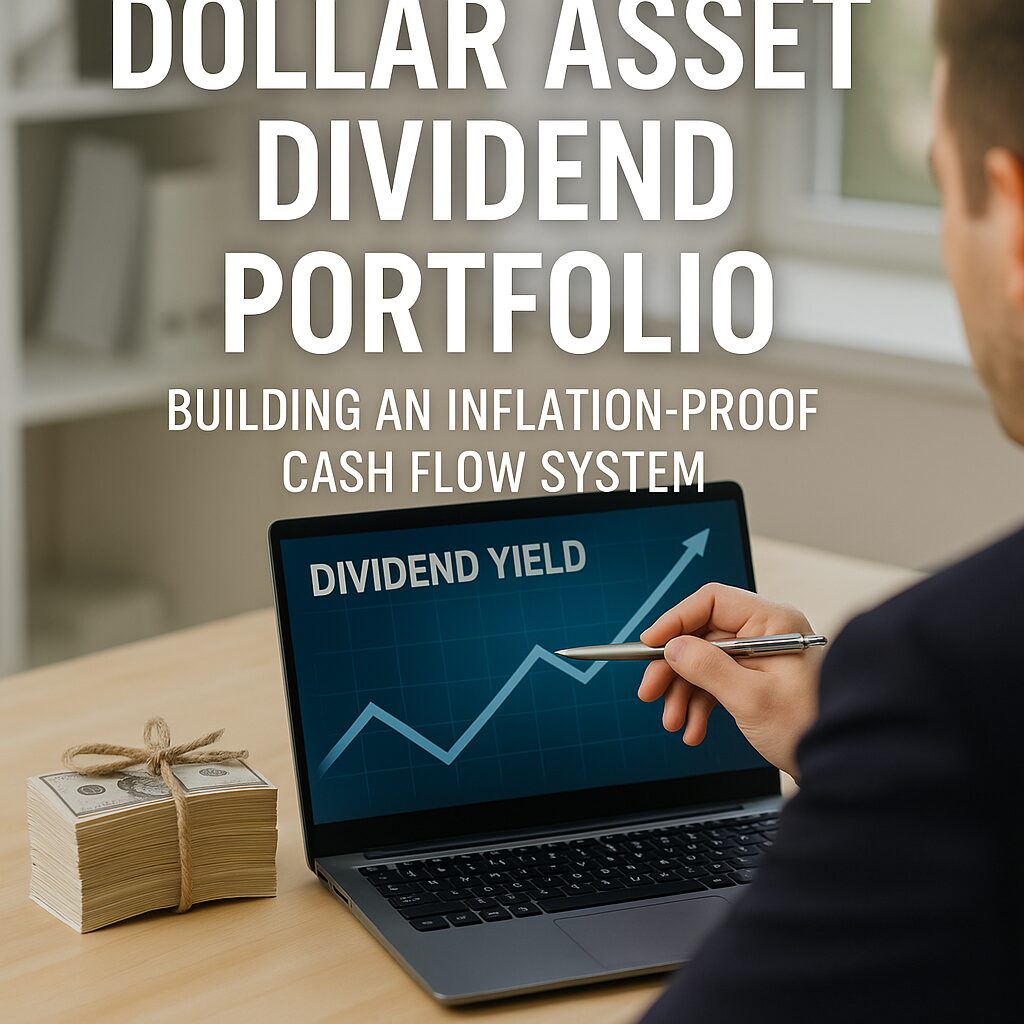Why Dollar Assets Are the Ultimate Inflation Shield
In an era where inflation can erode purchasing power faster than most people realize, investors are increasingly turning to dollar-denominated assets for stability and growth. The U.S. dollar remains the world’s primary reserve currency, which means assets priced in dollars not only hold global value but also attract the most robust financial infrastructure in the world. One of the most effective ways to monetize these assets over time is through a dividend-focused portfolio—an investment structure designed to produce steady, predictable cash flow while preserving and growing capital.
In this article, we’ll explore how to create a dollar asset dividend portfolio that withstands inflation, delivers consistent payouts, and compounds wealth over the long term.
1. Understanding the Power of Dollar-Denominated Dividends
Dividend-paying assets priced in U.S. dollars provide two critical benefits for global investors:
- Stable Currency Base – The USD historically appreciates or remains stable during global crises, protecting purchasing power.
- High-Quality Issuers – Many of the world’s strongest companies and governments issue dollar-denominated securities.
For non-U.S. investors, holding assets in dollars can also serve as a currency hedge against local inflation or depreciation. When combined with consistent dividend income, this becomes a formidable wealth-building engine.
2. Core Asset Classes for a Dollar Dividend Portfolio
A well-constructed portfolio balances yield, stability, and growth. Here’s the typical asset mix:
A. U.S. Dividend Stocks
- Blue-Chip Leaders: Companies like Johnson & Johnson, Procter & Gamble, and Coca-Cola have decades of uninterrupted dividend growth.
- Dividend Aristocrats & Kings: Firms that have increased dividends for 25–50+ consecutive years.
- Sector Diversification: Mix defensive sectors (utilities, consumer staples) with growth sectors (technology, healthcare).
B. U.S.-Listed ETFs
- High-Dividend ETFs: Vanguard High Dividend Yield ETF (VYM), Schwab U.S. Dividend Equity ETF (SCHD).
- International Exposure in USD: ETFs that hold non-U.S. companies but pay distributions in dollars.
C. U.S. Treasury & Corporate Bonds
- Treasuries: Virtually risk-free, often paying semi-annual interest.
- Investment-Grade Corporate Bonds: Higher yields than Treasuries with manageable risk.
D. REITs (Real Estate Investment Trusts)
- U.S.-listed REITs like Realty Income (O), known for monthly dividends.
- Provides inflation protection through real estate-backed income streams.
3. Structuring for Monthly Income
The goal is to ensure that cash flow arrives every month, not just quarterly. This requires staggering payout schedules:
- Combine stocks, ETFs, REITs, and bonds with different ex-dividend dates.
- Include monthly payers like Realty Income (O), STAG Industrial (STAG), and certain bond ETFs.
Example:
If you own three assets—one paying in January, another in February, and a third in March—you can rotate income continuously throughout the year.
4. The Inflation-Proofing Mechanism
Inflation erodes purchasing power, but certain dividend strategies counter this effect:
- Dividend Growth Investing (DGI): Focus on companies with a history of increasing dividends above inflation rates.
- Real Asset Exposure: Include REITs, energy infrastructure, and commodities that benefit from rising prices.
- Reinvestment: Reinvest dividends into more shares to boost future payouts.
Pro Tip: Target a portfolio yield of 3–5% with an annual dividend growth rate of at least 5%. This combination typically beats inflation over time.
5. Risk Management in a Dollar Dividend Portfolio
Even the safest dollar assets carry some risk:
- Market Risk: Stock prices can fluctuate even if dividends remain stable.
- Currency Risk (for Non-U.S. Investors): If your home currency strengthens significantly, USD payouts might be worth less locally.
- Interest Rate Risk: Bond prices fall when rates rise, though holding to maturity mitigates losses.
Mitigation Tactics:
- Diversify across sectors and asset types.
- Use a multi-currency account to store dividends in USD until optimal conversion.
- Maintain a mix of high-yield and growth-oriented assets.
6. Step-by-Step Portfolio Blueprint
Here’s a simple plan to get started:
- Define Your Target Income – Decide your monthly cash flow goal (e.g., $1,000/month).
- Allocate Across Assets – Example: 40% dividend stocks, 30% ETFs, 20% REITs, 10% bonds.
- Stagger Payouts – Select assets with different payment schedules to ensure monthly income.
- Automate Reinvestment – Set dividends to reinvest automatically for compounding growth.
- Review Annually – Check for dividend cuts, underperforming sectors, and adjust as needed.
7. Tax Considerations for International Investors
- Withholding Taxes: U.S. dividends are typically subject to 30% withholding for non-residents unless a tax treaty applies.
- Tax-Advantaged Accounts: Where possible, use retirement or investment accounts that offer tax benefits.
- Local Tax Rules: Understand how foreign dividends are treated in your country.
Conclusion – Building Resilient Cash Flow in Any Economy
A dollar asset dividend portfolio is more than just an income strategy—it’s a shield against inflation, currency risk, and economic uncertainty. By combining high-quality dividend stocks, REITs, ETFs, and bonds, you can create a steady, inflation-resistant income stream that pays you every month and grows stronger over time.
Done correctly, this approach ensures your wealth keeps pace with rising costs while securing financial freedom—no matter where in the world you live.
📌 Coming Up Next
The Retirement Triangle – How the Rich Balance Yield, Liquidity, and Risk in One Portfolio
Preview: In our next article, we’ll uncover the “Retirement Triangle” strategy the wealthy use to secure financial freedom. You’ll learn how to balance high yields, instant liquidity, and minimal risk in a single, well-structured portfolio—ensuring steady income without sacrificing safety or flexibility.
